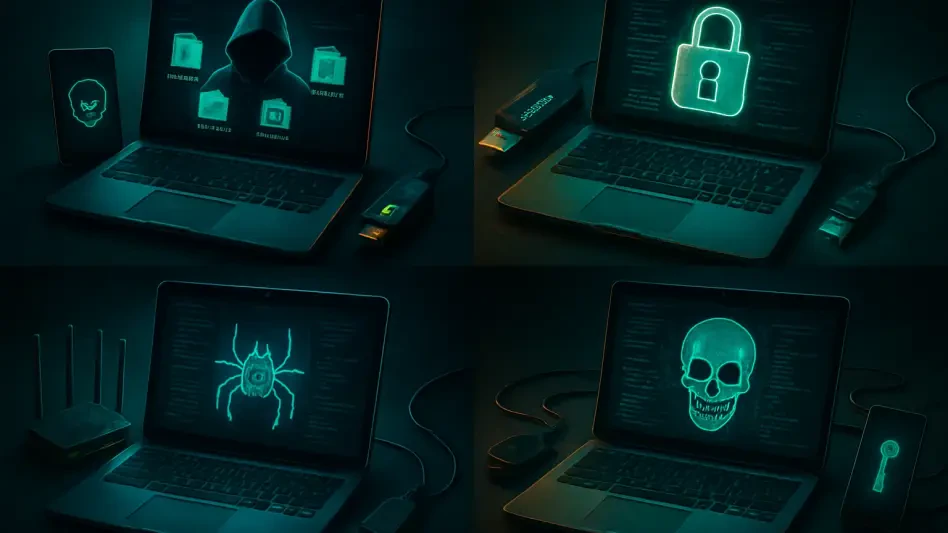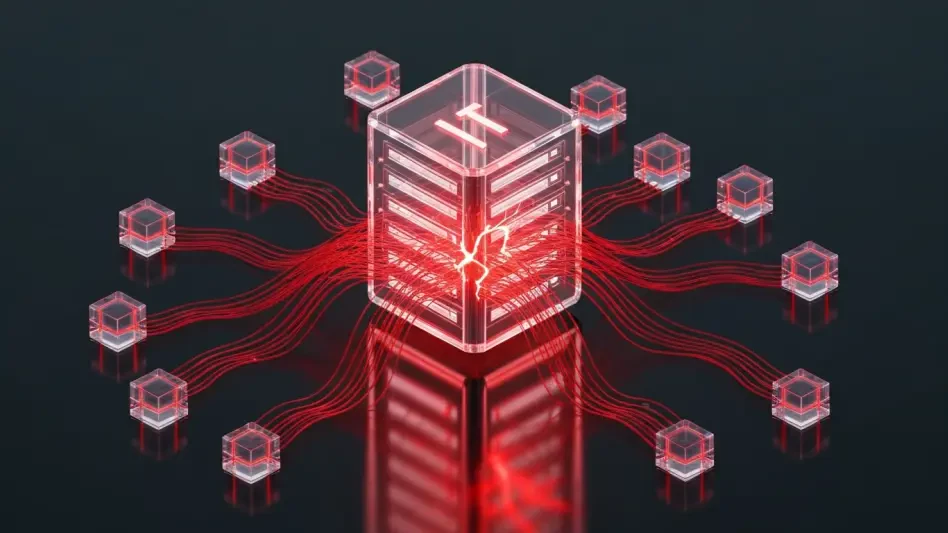In an era where digital espionage shapes global security, a sophisticated cyber threat group backed by Russia has emerged as a formidable adversary, targeting high-profile entities like NATO member governments and influential NGOs with relentless adaptation in cyber warfare tactics. This alarming trend highlights the urgent need to understand the evolving strategies of such actors and to prepare for their sophisticated methods. The focus here is on a significant shift in methods by this group, moving from traditional phishing to deploying advanced backdoors for sustained data theft.
The purpose of this FAQ article is to address critical questions surrounding these developments, offering clarity on the group’s changing approaches and their implications for cybersecurity. By exploring key concepts and tactics, this content aims to equip readers with actionable insights into the nature of these threats. Expect to learn about specific tools, defensive measures, and broader trends in state-sponsored cyber operations.
This discussion will cover the transition to new malware frameworks, the technical intricacies of these tools, and the industry’s response to such persistent challenges. Readers will gain a comprehensive understanding of how these threats operate and what steps can be taken to mitigate risks. The goal is to demystify complex cyber espionage tactics for a broader audience.
Key Questions or Key Topics
What Is the Significance of the Shift from Phishing to Backdoors?
The transition from credential phishing to deploying backdoors marks a pivotal change in the operational strategy of this Russia-backed cyber threat group. Historically, phishing was a primary method to steal login details, often through deceptive emails or fake login pages. However, exposure of these tactics prompted a need for more covert and persistent access to targeted systems, driving the adoption of backdoors as a means of sustained espionage.
Backdoors allow attackers to maintain long-term access to compromised systems, facilitating data exfiltration and further exploitation without immediate detection. This shift reflects a strategic focus on deeper infiltration, targeting sensitive information from high-value entities like policy advisors and former intelligence officers. The use of backdoors indicates a higher level of technical sophistication and intent to evade traditional security measures.
Industry observations underscore that this change poses significant challenges for defenders, as backdoors are harder to detect compared to phishing attempts. The ability to adapt quickly to public disclosures of their methods demonstrates the group’s agility and commitment to operational security. This evolution necessitates advanced detection tools and proactive defense strategies to counter such persistent threats.
How Have the Tools Evolved with NOROBOT and Related Backdoors?
A notable progression in the group’s toolkit involves the introduction of a loader named NOROBOT, which deploys two distinct backdoors: YESROBOT and MAYBEROBOT. Initially observed in mid-2025, YESROBOT, a Python-based backdoor, employed a unique split decryption key mechanism to hinder analysis by security researchers. Despite its innovation, limitations such as reliance on a full Python installation made it less practical and more detectable.
Recognizing these shortcomings, the group swiftly transitioned to MAYBEROBOT, a PowerShell-based backdoor introduced shortly after. This newer tool offers enhanced flexibility with capabilities to execute commands from a hardcoded command-and-control server, run system commands, and process PowerShell scripts. Such features indicate a deliberate move toward stealthier and more versatile malware to maintain access to compromised environments.
Continuous refinements to both NOROBOT and MAYBEROBOT have been evident since their inception, with frequent updates to infrastructure and file names to avoid detection. The adoption of split cryptography tactics further enhances the resilience of these tools against cybersecurity efforts. This rapid tool evolution highlights a pattern of technical adaptability aimed at sustaining espionage operations against high-profile targets.
What Techniques Are Used to Deploy These Backdoors?
Deployment of these advanced backdoors relies heavily on social engineering tactics to trick users into executing malicious code. One prominent method, known as ClickFix, uses deceptive prompts like fake CAPTCHAs to lure victims into running harmful DLL files through system utilities, bypassing typical security alerts. This approach capitalizes on human error, making it a potent vector for initial access.
Beyond social engineering, the group employs frequent changes in delivery mechanisms to evade pattern-based detection systems. By altering file names and infrastructure regularly, the attackers ensure that signatures used by antivirus software become obsolete quickly. This constant variation poses a significant challenge for maintaining up-to-date threat intelligence and underscores the importance of behavior-based detection over static signatures.
The combination of technical and psychological manipulation in deployment strategies amplifies the effectiveness of these backdoors. Cybersecurity experts note that such tactics exploit both technological vulnerabilities and human tendencies to trust seemingly benign prompts. As a result, educating users on recognizing suspicious interactions remains a critical component of defense alongside technical countermeasures.
How Is the Cybersecurity Community Responding to These Threats?
In response to the escalating sophistication of these cyber threats, the industry has adopted a proactive stance to bolster defenses. Protective tools, such as enhanced browser safety features, have been updated with the latest intelligence to warn users of malicious sites and downloads. Sharing indicators of compromise and detection rules with the broader community aids in identifying and mitigating these backdoors effectively.
Collaboration among cybersecurity entities has become a cornerstone of the defense strategy, ensuring rapid dissemination of actionable information. This collective effort enables organizations to update their systems against newly identified threats promptly. Such initiatives reflect a broader trend toward unified action against state-sponsored cyber operations targeting sensitive sectors.
Moreover, there is an increasing emphasis on developing advanced detection mechanisms that focus on behavioral anomalies rather than known malware signatures. This approach is crucial given the frequent adaptations by threat actors. The ongoing commitment to innovation in defensive technologies and user education forms a robust barrier against the persistent and evolving nature of these espionage campaigns.
Summary or Recap
This article distills the critical aspects of a Russia-backed cyber threat group’s transition to advanced backdoors for espionage purposes. Key points include the strategic shift from phishing to persistent access tools like NOROBOT, YESROBOT, and MAYBEROBOT, each representing a step forward in technical sophistication. The deployment tactics, heavily reliant on social engineering, further complicate detection efforts.
The main takeaway is the urgent need for adaptive cybersecurity measures that keep pace with rapidly evolving threats. The industry’s response, characterized by collaborative intelligence sharing and updated protective tools, stands as a vital countermeasure. These insights emphasize the importance of staying informed about emerging tactics in cyber warfare.
For those seeking deeper knowledge, exploring resources on state-sponsored cyber threats and advanced malware analysis is recommended. Numerous publications and threat intelligence platforms offer detailed reports on such actors and their methodologies. Engaging with these materials can provide a more comprehensive understanding of the challenges and solutions in this dynamic field.
Conclusion or Final Thoughts
Reflecting on the persistent advancements made by this cyber threat group, it becomes evident that their adaptability poses unprecedented challenges to global cybersecurity efforts. The shift to sophisticated backdoors underscores a critical need for vigilance and innovation in defense mechanisms over traditional approaches.
Looking ahead, organizations and individuals are encouraged to prioritize robust security practices, such as regular software updates and user training on recognizing deceptive tactics. Adopting a layered defense strategy that combines technological solutions with awareness can significantly reduce the risk of compromise.
As the landscape of cyber espionage continues to evolve, staying proactive remains essential. Exploring partnerships with cybersecurity experts and leveraging shared intelligence has proven to be effective steps in building resilience against such threats. This ongoing battle demands continuous adaptation and a commitment to safeguarding sensitive information from relentless adversaries.








